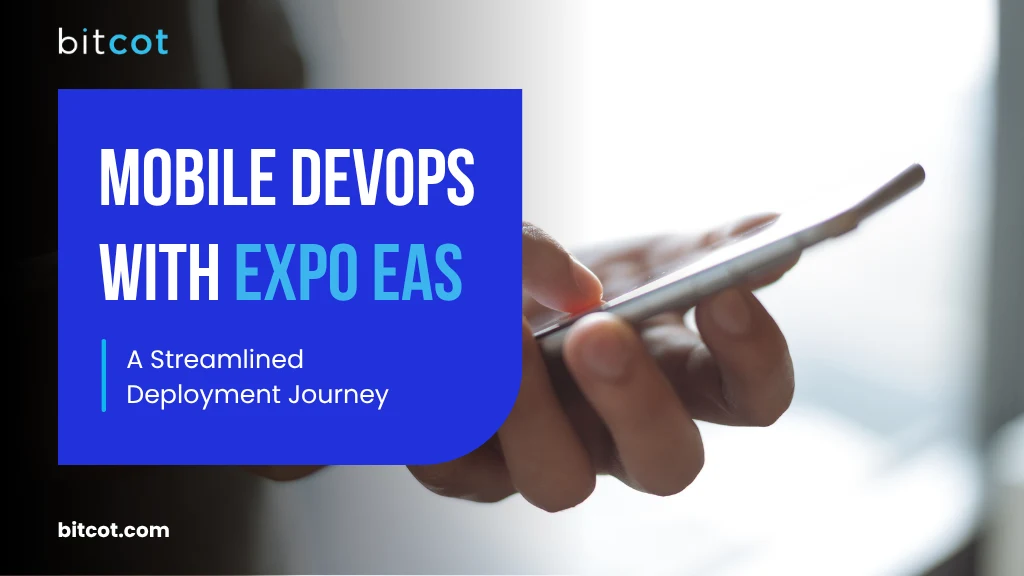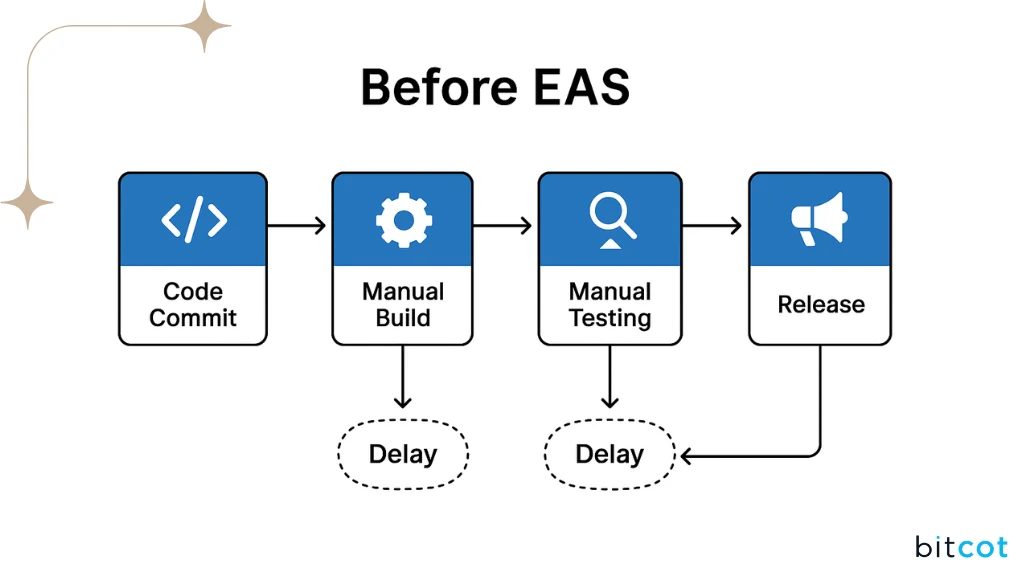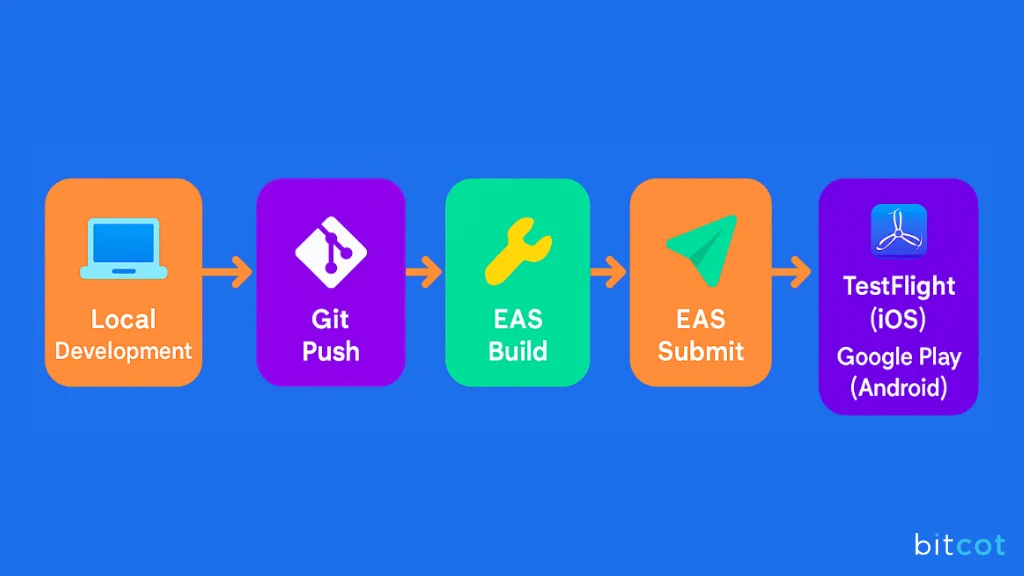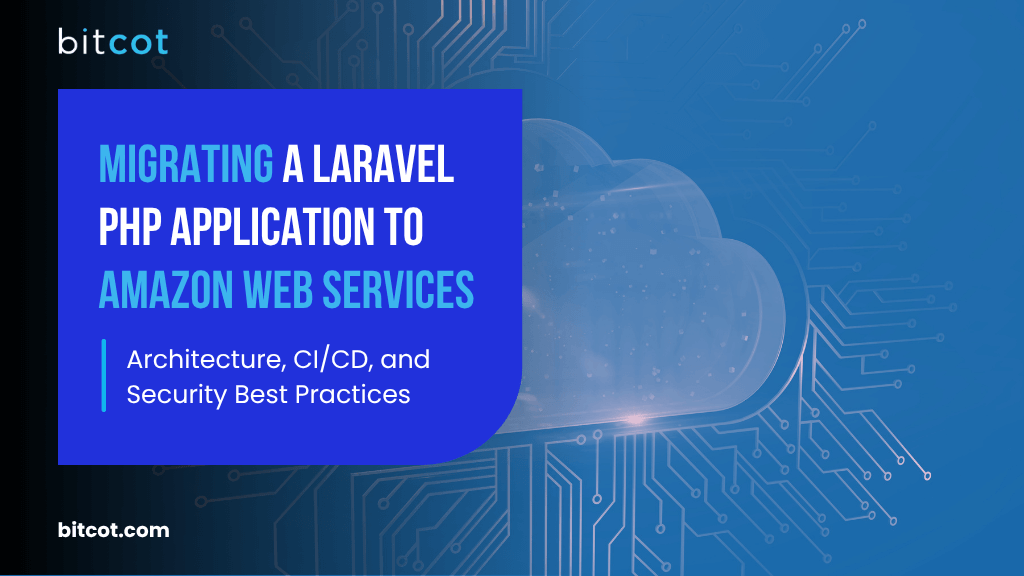
For teams developing scalable mobile applications, efficient delivery is paramount. As mobile development becomes increasingly complex, many teams find themselves relying on manual workflows for deployment.
While this approach might be sufficient in the early stages, it can quickly lead to a range of challenges like slower release cycles, inconsistent results across Android and iOS platforms, delays in hotfixes or updates, and bottlenecks in QA testing.
As the need for faster and more reliable deployments intensifies, traditional manual processes are no longer feasible.
This is where Expo Application Services (EAS) comes into play. By integrating EAS into a React Native workflow, teams can significantly streamline the deployment process. Expo EAS enables faster builds, reduced release times, and modern CI/CD practices that automate the entire delivery pipeline.
In this blog post, we’ll walk through a typical deployment journey, showcasing how Expo EAS transforms the process. From manual operations to fully automated delivery, this solution not only addresses the common pain points of mobile deployment but also enhances the overall efficiency of the development pipeline.
The Challenge: Manual Workflows Hinder Delivery

Teams often face a number of roadblocks, including:
Slower Release Cycles
The reliance on manual processes for triggering builds, testing, and deployments creates delays at each stage of the workflow. Teams must wait for individual approvals, handle tasks manually, and troubleshoot any issues, all of which add unnecessary time to the release cycle.
Inconsistent Results Across Android and iOS Platforms
Without automation, the same build process might be executed differently on Android and iOS. This can lead to inconsistencies in app performance and behavior, making it harder to ensure that the app delivers a seamless experience across all platforms.
Delays in Deploying Hotfixes or Updates
When urgent issues arise, manual workflows can make it difficult to quickly deploy hotfixes or updates. The need for manual intervention can delay the process, causing teams to miss critical windows for quick fixes or updates.
Limited Integration with CI/CD Pipelines
Teams may lack the tools or infrastructure to integrate their build and deployment processes with CI/CD pipelines. This lack of automation means that each step, including build, test, and deploy, must be handled separately, resulting in inefficiencies and potential errors.
Bottlenecks in QA Testing and Feedback Loops
In a manual workflow, QA teams are often dependent on manual build submissions. This slows down the feedback loop, making it harder to catch bugs early in the process. As a result, issues might not be discovered until later in development, affecting the overall quality of the app.
The Solution: Streamlined Delivery with Expo EAS
Adopting Expo Application Services (EAS) provides a scalable solution to the challenges faced by teams relying on manual workflows. Expo EAS integrates seamlessly into the React Native development process, offering a modern approach to app delivery that eliminates the bottlenecks and inefficiencies of traditional methods.
By incorporating tools like GitHub Actions, EAS enables fully automated, cloud-based workflows, ensuring that teams can deploy apps with greater speed, reliability, and consistency.
-
CI/CD Integration
Expo EAS integrates with GitHub Actions, enabling automatic build triggers. This eliminates the need for manual intervention at every stage, reducing the time it takes to go from development to deployment. Automated workflows ensure faster and more efficient updates, ensuring that your app is always up-to-date.
-
Cloud-Based Builds
With Expo EAS, there’s no need to rely on local machines to generate builds. Cloud-based builds enable teams to access faster, more scalable resources, ensuring that builds are created consistently without the constraints of local environments. This approach minimizes the risk of errors due to machine inconsistencies.
-
Over-the-Air (OTA) Updates
Expo EAS allows teams to deploy instant patches without waiting for the app store review process. OTA updates ensure that bug fixes or minor updates can be delivered immediately, improving the user experience and speeding up response times to critical issues.
-
Environment Profiles
With Expo EAS, teams can set up separate dev, staging, and production environments. This allows for more precise control over builds, ensuring that the right configurations are used at each stage of the deployment process. Separate profiles help prevent issues related to mismatched environments during development and testing.
-
Seamless App Store Deployment
Expo EAS allows for the direct submission of builds to TestFlight and Google Play. This integration streamlines the process, removing the need for manual steps to distribute builds. Teams can submit builds quickly and easily to both Apple TestFlight (iOS) and Google Play Console (Android), enabling faster testing and release cycles.
Seamless Deployment to TestFlight and Google Play
One of the most powerful capabilities of Expo EAS is the ability to submit builds directly to Apple TestFlight and Google Play Console using the eas submit command.
This drastically simplifies and accelerates mobile app distribution, reducing the friction between development and testing, and improving feedback loops across platforms.
Below are the supported distribution channels.
TestFlight (iOS)
- With direct integration, internal and external testers can receive new builds within minutes.
- The process of pushing updates for review or QA becomes seamless, and because feedback loops are much tighter before public release, teams can iterate faster.
- Expo EAS enables smoother and faster iOS testing, eliminating the need for manual uploads through Xcode or Apple’s Transporter tool.
Google Play Console (Android)
- Expo EAS supports the submission of .aab (Android App Bundle) builds directly to various Google Play tracks (Internal, Closed, or Production).
- This enables controlled rollouts, early feedback collection, and automated delivery.
- Developers no longer have to manage APK generation or log into the Play Console manually, saving time and reducing errors.
This direct integration into both app ecosystems helps developers streamline mobile CI/CD even further. With eas submit, your team can confidently automate the final leg of deployment, from build generation to store delivery, ensuring faster releases, less manual work, and greater reliability in your mobile delivery pipeline.
Credentials and Signing Made Easy
Managing credentials and app signing can be one of the more cumbersome and error-prone aspects of mobile app deployment. From provisioning profiles to signing keys, developers must ensure all credentials are correctly configured to successfully submit apps to the App Store or Google Play.
Expo EAS streamlines this complex process, offering both automatic and manual credential management options, so teams can focus on building apps, not managing secrets.
iOS Credentials
Expo EAS supports a range of iOS credentials, including .p12 certificates, provisioning profiles, and App Store Connect API keys.
With EAS, developers can automate the generation, upload, and management of these credentials, removing the need for manual configuration through Xcode or the Apple Developer Portal.
- Automated iOS credential management ensures that the right certificates and provisioning profiles are always used for builds, reducing the risk of errors during deployment.
- App Store Connect API keys can be automatically configured to interact with EAS, allowing for smoother interactions with the App Store Connect platform.
Android Credentials
For Android, Expo EAS simplifies the process by supporting the upload of signing keys and Google Play JSON service account credentials. EAS handles the encryption and secure storage of these credentials, ensuring that app signing is managed in a secure, efficient manner.
- Automatic key management for Android helps eliminate the possibility of misconfigurations that might otherwise delay the submission process.
- Google Play JSON credentials are securely stored, allowing for smoother integrations with Google Play’s services and enabling automatic submissions.
With Expo EAS’s secure credential handling, there’s no need to manually manage sensitive data. Credentials are stored securely in Expo’s cloud infrastructure, with encryption and access controls in place to prevent unauthorized access. This makes the app signing process far less error-prone, ensuring that apps are signed and submitted with confidence.
Results and Benefits of Adopting Expo EAS for Mobile App Deployment
Teams that adopt Expo EAS experience significant improvements in both speed and efficiency throughout the app delivery process.
By eliminating manual workflows and integrating modern automation tools, Expo EAS enables mobile teams to focus on what matters most: building great features and delivering high-quality apps.
Let’s explore the key results and benefits teams can expect when they embrace this streamlined deployment approach:
Faster Time-to-Market
Ship apps in hours, not days. What once required full workdays now completes within tight timeframes. Teams consistently report 70-85% reductions in deployment cycles, with routine updates moving from code commit to user availability in record time.
Efficient Testing
Builds reach QA and testers through TestFlight and Google Play within minutes. This acceleration creates tighter feedback loops, enabling multiple iteration cycles within single sprints and dramatically improving bug discovery rates before production releases.
Better Quality
OTA updates enable real-time bug fixes without app store review delays. This capability eliminates the traditional trade-off between deployment speed and stability, allowing teams to ship confidently knowing critical issues can be addressed instantly.
Less Manual Work
Build, sign, upload, and release, all via CLI or CI/CD. Infrastructure complexity disappears as cloud-based builds eliminate the need for maintaining macOS build servers, managing Xcode versions, or troubleshooting certificate renewals.
Platform Consistency
One workflow handles both Android and iOS. Teams eliminate platform-specific expertise bottlenecks and reduce bus factor risks. Any developer can manage releases for both platforms through identical processes, improving flexibility and reducing dependencies.
Mobile App Deployment Technology Stack for React Native
A typical mobile delivery pipeline includes essential tools and services that streamline React Native app deployment from development to production across iOS and Android platforms.
Expo EAS
Expo EAS provides Build, Submit, and Update capabilities. EAS Build offers cloud-based compilation services that eliminate local environment dependencies, while EAS Submit automates app store submissions for both iOS and Android. EAS Update enables over-the-air deployments for instant bug fixes and feature rollouts.
GitHub Actions
GitHub Actions serves as the CI/CD automation backbone, enabling continuous integration and deployment workflows for React Native projects. This platform automatically triggers builds on code changes, runs test suites, and coordinates mobile app releases across multiple environments, creating fully automated deployment pipelines.
Expo Managed Workflow
Expo Managed Workflow centralizes configuration via app.json, providing unified project settings, build parameters, and deployment configurations. This approach ensures consistent React Native app builds across development teams while eliminating configuration drift between environments.
TestFlight and App Store
TestFlight and App Store handle iOS distribution for React Native applications. TestFlight enables rapid beta testing with instant build distribution to internal teams and external testers, while App Store integration provides automated submission workflows and production release management.
Google Play Console
Google Play Console supports comprehensive Android distribution across Internal Testing, Closed Testing, and Production tracks. The platform enables staged rollout capabilities, automated rollback mechanisms, and detailed release management for React Native apps on the Google Play Store.
Final Thoughts
Expo EAS modernizes mobile app delivery for React Native applications, transforming deployment from a complex, manual process into a streamlined, automated workflow.
With automated builds, integrated CI/CD, secure credential handling, and fast distribution to TestFlight and Google Play, teams can focus on shipping features, not managing infrastructure.
The shift to EAS-powered workflows represents more than operational improvement; it fundamentally changes how teams approach product development. When deployment friction disappears, development velocity increases, testing cycles accelerate, and user feedback integration becomes seamless. Teams deliver higher quality products with greater confidence and consistency.
For any organization looking to scale mobile deployments, EAS offers a clear path forward. The investment in modern deployment practices pays dividends through reduced operational overhead, improved developer productivity, and enhanced market responsiveness.
Ready to transform your mobile deployment workflow?
Bitcot, a reputed React Native app development company, specializes in implementing Expo EAS solutions that streamline React Native app delivery. Our expert team helps organizations transition from manual processes to fully automated CI/CD pipelines, reducing deployment times and improving app quality.
Contact Bitcot today to discuss how we can accelerate your mobile development cycle.




















